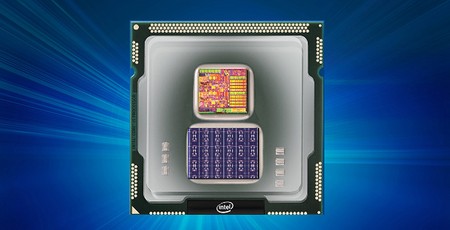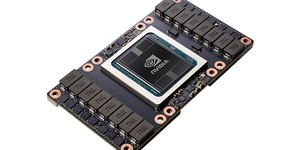Intel unveils 64-chip Pohoiki Beach neuromorphic supercomputer
July 15, 2019 | 15:30
Companies: #applied-brain-research #defence-advanced-research-projects-agency #intel #intel-labs #rutgers-university #university-of-waterloo

Intel's Rich Uhlig has officially unveiled the company's latest neuromorphic Loihi system design, the Pohoiki Beach, claiming the 64-chip implementation offers up to a three-orders-of-magnitude gain in performance and energy efficiency for selected workloads compared to a standard CPU.
Intel unveiled the Loihi self-learning neuromorphic processor design back in September 2017, claiming that the part offered a considerable advantage over traditional processors - and even graphics processors, the highly-parallel parts which have enjoyed success in high-performance computing circles to Intel's chagrin - for deep-learning workloads, based on mimicry of the human brain's 'spiking' neural networks.
Now, at the Defence Advanced Research Projects Agency (DARPA) Electronics Resurgence Initiative (ERI), Intel has unveiled a 64-chip Loihi system dubbed Pohoiki Beach - and claims it can be up to 1,000 times faster and 10,000 times more efficient for suitable workloads than running on a conventional CPU.
'We are impressed with the early results demonstrated as we scale Loihi to create more powerful neuromorphic systems,' Rich Uhlig, managing director of Intel Labs, told attendees at the event. 'Pohoiki Beach will now be available to more than 60 ecosystem partners, who will use this specialised system to solve complex, compute-intensive problems.'
'With the Loihi chip we've been able to demonstrate 109 times lower power consumption running a real-time deep learning benchmark compared to a GPU, and 5 times lower power consumption compared to specialized IoT inference hardware,' adds Chris Eliasmith, co-chief executive of Applied Brain Research and professor at University of Waterloo, in support of Intel's bold claims. 'Even better, as we scale the network up by 50 times, Loihi maintains real-time performance results and uses only 30 percent more power, whereas the IoT hardware uses 500 percent more power and is no longer real-time.'
'Loihi allowed us to realise a spiking neural network that imitates the brain's underlying neural representations and behaviour,' says Professor Konstantinos Michmizos of Rutgers University. 'The SLAM [simultaneous localisation and mapping] solution emerged as a property of the network’s structure. We benchmarked the Loihi-run network and found it to be equally accurate while consuming 100 times less energy than a widely used CPU-run SLAM method for mobile robots.'
The 64-chip Pohoiki Beach system features eight million 'neurons,' and is now available to the wider research community via the Intel Neuromorphic Research Community (INRC) programme after early work with those who had partnered with Intel on the project. It is not, however, yet a general product; Intel still describes Loihi, nearly two years after it was first unveiled, as a 'research chip,' while admitting that its performance gains can only be found in 'specialised applications' which work well with a spiking neural network design - including SLAM, sparse coding, graph search, path planning, and constraint-satisfaction problems.
Intel has confirmed it plans to continue to scale the Loihi architecture, planning a 100 million 'neuron' version dubbed Pohoiki Springs by the end of the year.

MSI MPG Velox 100R Chassis Review
October 14 2021 | 15:04








Want to comment? Please log in.